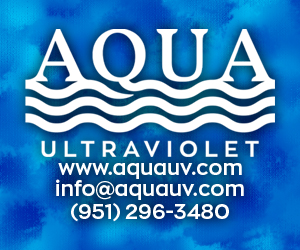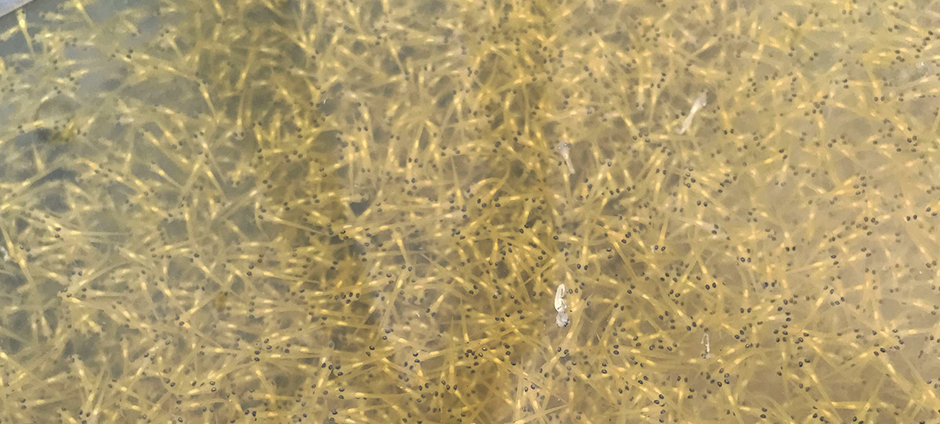
When I was young and barely hip-high to my father, he began taking my older brother and me trout fishing at the local creek. I had no fishing pole — I was only there to observe, since my casting skills were still lacking. As the story goes, while I was exploring the shoreline, I spotted a fish in the water and jumped in after it. The excitement got the best of me and, even though I obviously didn’t catch the fish, it’s almost like the fish caught me.
From that moment forward, I was hooked on fishing, and my informal education in aquatics had begun. The more time I spent in nature around ponds and combing creeks, the more I began to understand and appreciate the aquatic ecosystems that surrounded me.
Fast forward 30 years, and I have a family of my own — a beautiful wife beside me, as well as three happy, healthy, curious kids. We take them around all the same fishing holes, and we even have a small aquarium that our youngest checks on every day. Of course, I want them to share my appreciation for the hobby, so on occasion, I take the older kids to the hatchery to show them the different types of fish we raise.They have always been in awe of the koi. They are impressed by the size and unique color patterns, but at times they have had questions that I have no answers for. So, my research has had to dive a little deeper at times. In doing so, I began to realize that keeping koi is a wonderful learning opportunity for young people and a healthy hobby that provides a wide range of different subjects to explore and experience.
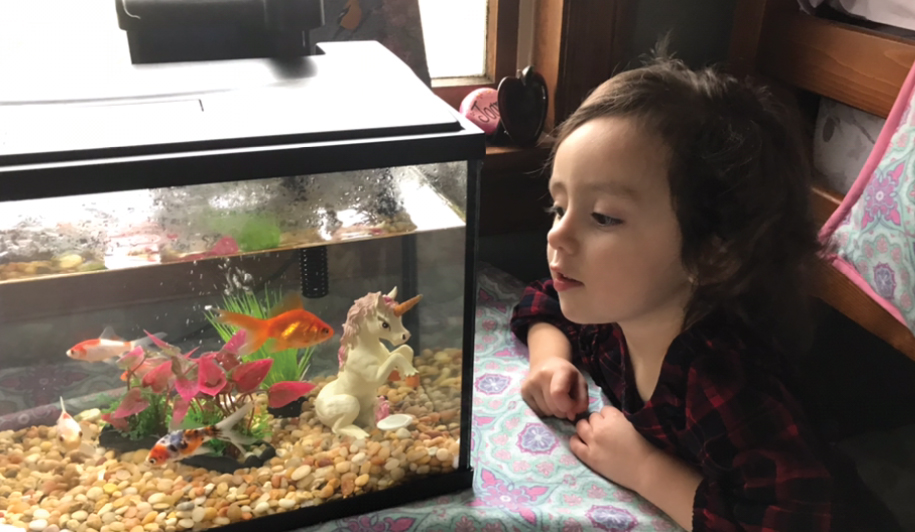
There is a lot to wonder about while wandering about. The curiosity of a child should always be allowed to explore. To understand at an early age what is and isn’t possible, in my opinion, is absolutely fundamental. Whether you just built a small backyard koi pond or just started out with a goldfish from the county fair, basic aquaculture techniques are the first thing anyone keeping fish should learn.
Any seasoned koi keeper will tell you that maintaining proper water quality is essential. A portion of that maintenance includes checking the water parameters like pH, hardness and alkalinity. This is a perfect opportunity for an introduction to chemistry. What are these products made of that we are using to change the pH? Are they synthetic or organic? Don’t forget, pH is logarithmic, which means a pH of 6 is 10 times higher than a pH of 7 (and 100 times higher than a pH of 8).
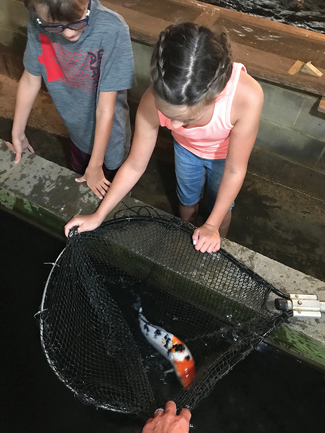
Even a little mathematics sneaks in when you go to make an application. For instance, how much product is needed to treat a 50-gallon tank? This is where conversion charts become handy. Knowing how to calculate acre feet for a pond is important to understand, but do you know how many fluid ounces are in a gallon? How many dry ounces are in a pound? At 8.35 pounds per gallon, that 50-gallon tank weighs almost 418 pounds when full. Now that’s getting heavy! These types of conversions, along with many others, are useful to know as a fish keeper, as well as in everyday life. I wish I would have learned them sooner.
One of the most eye-opening activities I introduced to my children was using a microscope to check water and tissue samples. I showed them how to successfully build a slide sample without fatally wounding the specimen, even though they didn’t want to touch it. The number of oohs, ahhs and questions every time they moved their view to a different position was remarkable. You just never know what you might see!
It was difficult at times, because I still find things in samples that I’m not familiar with. Most children won’t understand everything you explain to them, but every now and then, you see a glimmer of excitement in their eye, and that makes the lesson worth it.
Koi Speak
The Japanese language was first recorded in written form around the third century A.D., which is about the same time that the carp was brought to Japan from China. For centuries, only emperors of Japan kept and bred what they called goi, later called nishikigoi, which broadly means ornamental or decorated carp.
Without a doubt, it has been challenging for me to learn how to describe a koi using the traditional Japanese terminology and nomenclature. (Maybe I’m getting old, or maybe I just need to study harder.) Children tend to learn new languages much more easily when exposed at an early age. There are more than 100 different varieties of koi, each with its own unique name that describes the fish by its colors, patterns and body confirmation.My youngest is just over a year old and is starting to babble, so we are working on learning the colors first. Sumi (black), shiro (white) and hi (red) are probably the most prominent colors found on desirable koi. Then there is the term gin rin, which describes a silver metallic sparkle in the fish’s scales. Hikari koi have an overall metallic luster. A doitsu will have a mirror-like appearance on both sides of the dorsal fin, but it otherwise appears scaleless.
These are just a few examples of how koi names are derived. Learning to accurately describe these beautiful creatures can certainly be overwhelming, especially for a young person barreling into it full steam. However, I’ve come to find that if you pick one variety at a time and focus on what makes that fish unique, you can begin to build a solid repertoire for identifying koi.
Kulture
In the early 1800s, koi keeping escaped the rice fields, where they were typically raised for food, and koi began being bred for their ornamental characteristics. A century later, around 1914, these koi specimens were introduced to the world during an exposition in Tokyo, Japan.
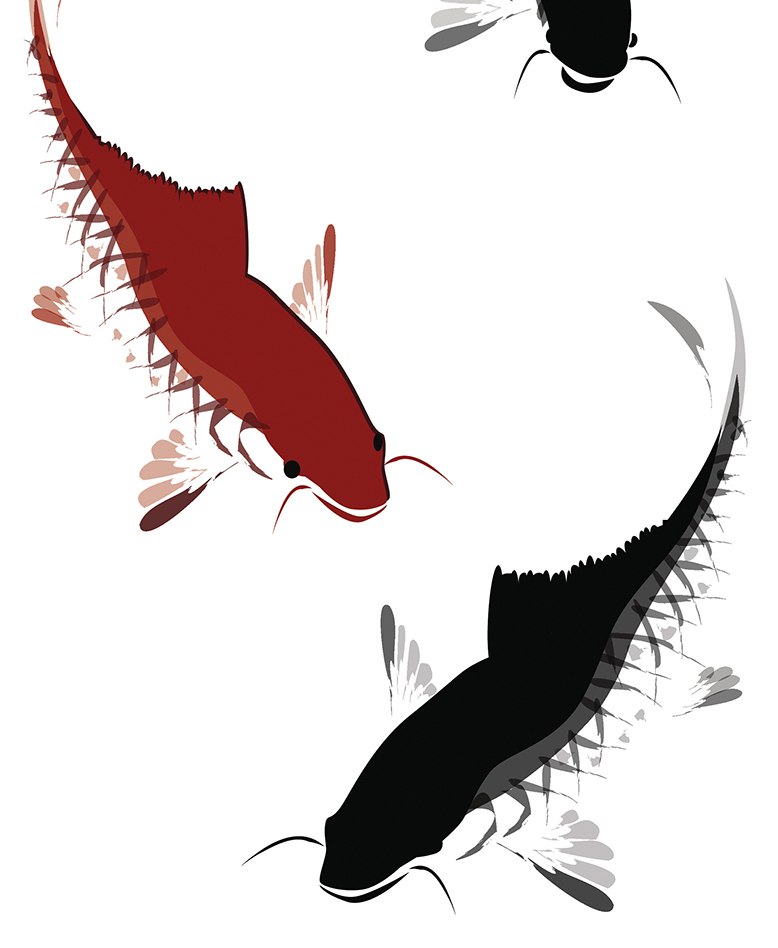
Today, there are millions of koi enthusiasts spread across almost every continent with a common goal to raise the happiest and healthiest koi they can. One way to know if you’ve chosen a fulfilling hobby is if you find a multitude of other people that have the same interest. There are now societies to join at the local, state and national levels that often offer competitions, where people can bring their prized fish to be evaluated by professional koi keepers. These groups and clubs are an invaluable source of interaction for all range of fish keepers, from listening to stories and gaining new perspectives to learning from the successes and failures of your fellow hobbyists.
Technology, without a doubt, has proven to be the greatest catalyst in today’s expansion of the aquaculture community. Although I don’t think children should be left in front of an electronic device and unaccompanied for extended periods of time, kids have an obvious appetite for screen time and adapt quickly to using connective devices. With the internet spreading into every nook and cranny of our lives, it’s become even easier to interact with people you otherwise never would have had the chance to meet. Social networking, for better or worse, has created the most efficient way to link up and communicate with fellow koi keepers unlike any other time in human history.
Kreativitiy
What class does every student look forward to besides recess? Art class!
My children are no different. They love to design, draw and build things any time they get the chance. The passion for artistic koi creations dates back centuries and was often found in the palaces of emperors or other wealthy members of society. There are so many paintings and drawings of the most beautiful specimens that very well could be related to the koi you have in your pond today. The traditional artwork depicting these living jewels from Japanese culture is astounding and worth exploring.
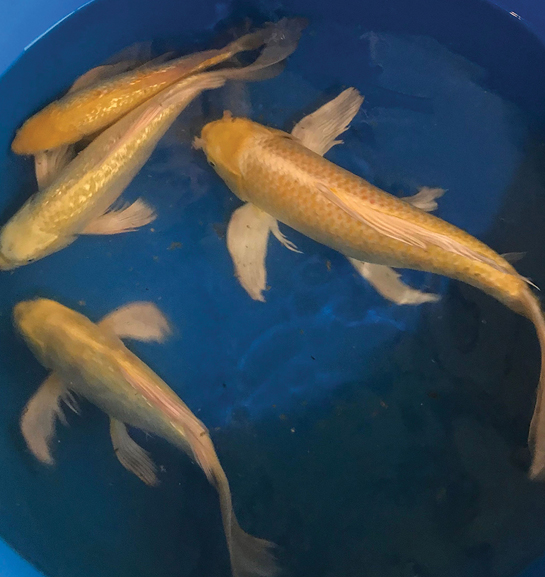
Today you can find a multitude of different artistic mediums to allow children to express themselves. This includes coloring books, painting by number and good old-fashioned freehand drawing. There is even a technique to make a folded paper koi using origami.
Anything to stir up the imagination! There are beautifully carved and sculpted koi made out of various different materials like wood and plaster that can be painted with fine detail to look like your favorite finned family member. You can even find the image of a koi minted into a coin. Whatever the mind can conjure, it can also create.
The hobby of koi keeping certainly has come a long way from being a 2nd-century food source to a 21st-century piece of living art. From palace courtyards to today’s typical backyard pond, the joy of raising this vibrant fish has been shared and passed down over many generations. I hope I can do the same by teaching my kids about koi culture and aquaculture in general. After all, it’s not always easy to keep a young person’s attention. Whether they remain interested in koi keeping as they get older or not, many fond memories will be made.
